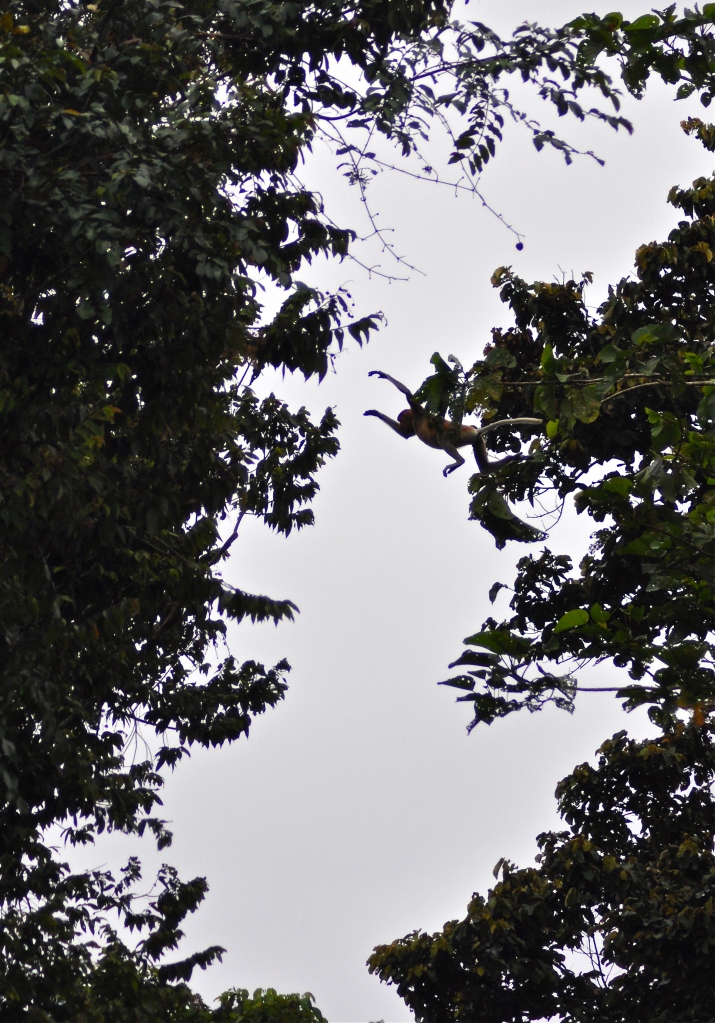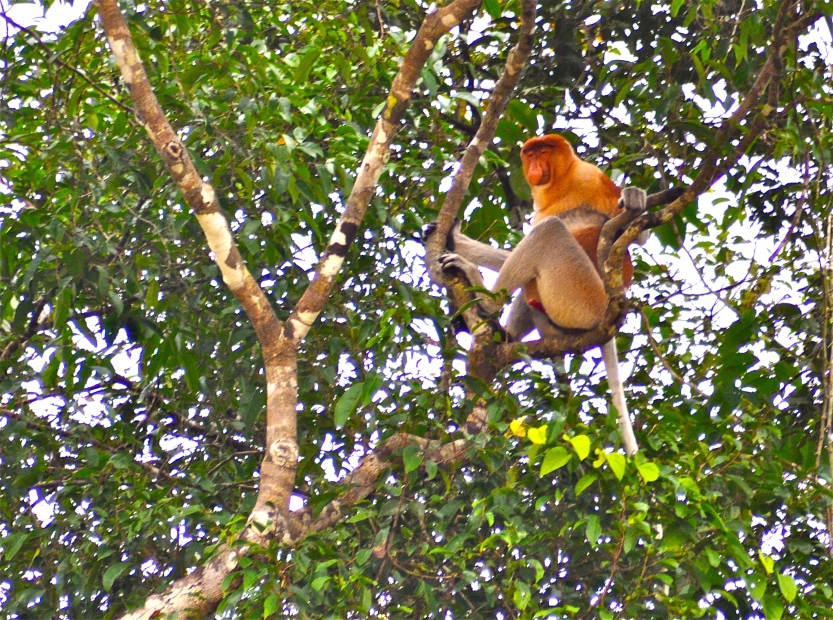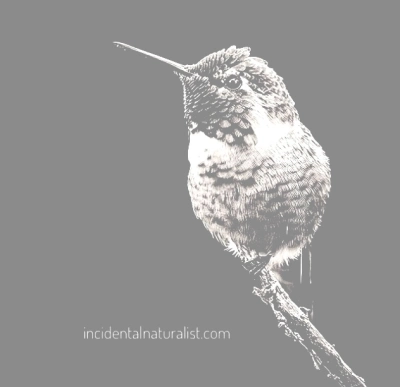Borneo is extraordinary. Positioned in the South China Sea, mainland Borneo is the third largest island in the world, and is made up of three countries:
- Indonesia 73%
- Malaysia 26%
- Brunei 1%
With temperatures ranging between 27 and 32 degrees Celsius (80 to 90 Fahrenheit) and 80% humidity year-round, this lush green island is home to some of the oldest rainforests, and most remarkable wildlife on the planet.
I moved to Singapore to take up a job opportunity; 3 months of working in the new role, combined with the stress of a move overseas, meant it was time to take a vacation to re-set body and mind. I had made a promise to myself that I would not waste a day of my time overseas. There was never a question that my first break from work would see me realise a childhood dream, by flying east to Borneo. If ever there was a bizarre looking creature on TV, an animal that I had never heard of before, a weird plant, or an unusual tropical fish purchased for the tank in my bedroom, a little research always seemed to reveal that it originated from Borneo. I had to go.
I booked flights and arranged accommodation in the towns and jungle of the Sabah region of Malaysian Borneo. I bought a digital SLR camera as a present to myself, although I had never used one before, and didn’t know where to start.
On day 3 of the trip, I found myself rolling a rucksack off my back, into a narrow wooden longboat on the Kinabatangan River. The aging engine propelled us through the soupy brown water for over an hour, through dense jungle dotted with small communities, where people made a living from the river’s bounty of fish, shrimp and forest honey.
The night was spent in a timber-built jungle lodge on the river bank; it was clean and simple, serving delicious meals of local food. The huge, sweet freshwater river shrimp from the Kinabatangan were magnificent! A good book was essential for the evenings, and when the power cuts out (as is its wont), you rediscover the sense that we seem to use least in our modern world – listening. The impossibly black night is illuminated by a chorus of frogs, cicada, geckos and the hoots of owls.
Awake and out of bed at first light, I walk down to the boat. The plan is to use the river in the same way that the wildlife of Sabah does; as a natural jungle highway. The river provides for humans and wildlife alike, and so affords the best nature viewing opportunities. The first morning of the cruise was all about one creature – the Proboscis monkey.

When I was young; not yet old enough to become obsessed with David Attenborough’s journeys through the natural world, my mum would find suitable animal shows for me to watch on TV. One of these shows, aimed at the under eights, was called Heads and Tails. A guy (Derek Griffiths) would hang together some clips, either from the wild or, more often the zoo, and would voice-over to give the animals a human personality. Great TV for little kids! Here I am, some 35 years later, and the only thing I remember (as clearly as if it were yesterday) is the Proboscis monkey scene and their song.
These oddly put together primates, with a huge, dangling nose, a large rounded belly, long tail and a neat, ginger, squared-off haircut seemed to be so peculiar and yet so human, unlike any other monkey or ape that I had seen on TV or in books, that I became fascinated by them.
The Proboscis monkey is endemic to the low wetland areas of Borneo. They are large monkeys, the male growing to a length of 75 cm (30 inches) and weight of up to 22 kg (50 lb.). The female is considerably smaller at 62 cm (24 in) in length and a weight of up to 12 kg (26 lb.). Both sexes have an extremely long tail. The Proboscis monkey takes its name from the male’s huge (up to 10 cm (4 inches)) nose. They also have extremely fat bellies, which assist in the difficult task of digesting the tough vegetation that forms the bulk of their diet
The local guides delight in telling tourists that the monkey is also known as Belanda in Malay, which translates as ‘Dutchman’. The island natives believed that the monkey shared the characteristics of big nose, red face and fat belly with the early Dutch colonisers of Indonesia.
The first group of monkeys were high in the branches overhanging the Kinabatangan, fur fluorescing in the early morning sun, precariously balanced on the highest branches, where the most tender, new leaves sprout. A female lets out a bark to alert the group that the big pink ape who cannot climb trees has arrived in a boat below.

For me this was a wonderful moment, connecting these beautiful, exotic creatures with the singing monkeys on TV, that made me giggle so much as a child, and piqued my interest in all things wild.
Their interest in us lasts for only a few moments before they return to the serious business of lazily chewing leaves. The calm is punctuated by a burst of noise and explosion of energy as disagreements break out, and two monkeys chase each other at remarkable speed through the trees.

The chase is followed by the most extraordinary, death defying leaps from tree to tree. Try as I might, balanced on a small wobbly boat, and without any photography skill, I was not fast enough to capture the most spectacular of these suicidal leaps. It seemed that there was no jump too great, with arms lifted high and ruddered by the long thick tail, they flung themselves through the canopy.

The Proboscis live in harems, with one mature male presiding over a group of females, protecting his breeding rights from any cheeky young male intruders. With so many females to provide for, he keeps himself ready for service at a moment’s notice; after all, it is a jungle out there!

During the day, the monkeys leave the river banks, heading deep into the surrounding forests in search of fresh leaves and forest shade. Silence returns to the canopies, except for the occasional squawk of a hornbill. As the sun begins to sink again the Proboscis monkey returns to the river, takes a cooling dip before heading back up to the canopy to sleep.
The Proboscis monkey is listed as an endangered species, having seen its population decrease by up to 50% over the last 40 years. A familiar story; the monkey is protected in all parts of Borneo, but its fate is tied to the fate of its habitat, which continues to be destroyed at alarming rates.
I have been fortunate to travel to many countries, but Sabah in Borneo is probably the most extraordinary place that I have visited. Through greater awareness and responsible tourism, I hope that the people of Borneo can bring their families out of poverty, in a sustainable way, that preserves one of the greatest assets on the planet; the Borneo rainforests.
If you enjoyed this post, please follow Incidental Naturalist.
Comments and shares are welcomed.
Categories: Asia





Dziękuję, świetny blog – ciekawe informacje 🙂
LikeLiked by 1 person
Thanks for the kind feedback!
LikeLiked by 1 person
🙂
LikeLike
Beautiful photos and commentary…thank you for taking us along for the ride!!!
LikeLiked by 1 person
Thanks Dragonfly!
LikeLiked by 1 person
Absolutely incredible post! I hope to visit Borneo next year; and your post just pushed it up to the top of my list. Your proboscis photos are incredible and could not have been easy with the monkeys’ speed and deftness, as well as the darkness of the jungle. I hadn’t realized their stomachs were so big, and of course I love the nose and long tails.
LikeLiked by 1 person
Thanks for the great comment, Jet! I will have 2 more Borneo posts over the coming weeks. If you love nature, Borneo is a must!
LikeLiked by 1 person
Looking forward to the upcoming posts, wondering if you had the joy of an orangutan…. 🙂
LikeLike
Your posts make me want to discover a little more Asia. Thank you!
LikeLiked by 1 person
I’m Indonesian, usually called it “Siamang”. Thank you for visiting my country, come back again and see more beautiful of Indonesia. Thanks 🙂
LikeLiked by 1 person
Your country is very beautiful and welcoming. I have been several times and love it! 🙂
LikeLiked by 1 person
I’m sorry, it’s not “siamang” but “bekantan”. visit other island, such as Bali and Lombok 🙂
LikeLike
I always look forward to your posts, they always have such wonderful pictures and stories. Just out of curiosity, have you ever seen a Bornean clouded leopard?
LikeLiked by 1 person
Thanks Josh! Unfortunately I have not. My wild cat experience to date is limited to tigers and a leopard in Sri Lanka. Not that I am complaining as I have been fortunate to see those. Hopefully one day I’ll see a few more!
LikeLiked by 1 person
Great pictures! I have “heard” a lot this beautiful creature when visiting Indonesia—their voice is definitely loud and unique.
LikeLiked by 1 person
Nice post! I felt your sense of adventure today as I just set off today to do whatever, wherever because it was a sunny day. Coffee and croissant on a patio, boardwalk to beach to ice cream kinda day. First taste of local corn was a sweet experience.
LikeLike
Oh and a lobster sandwich for lunch.
LikeLike
Hi David. This is an interesting and entertaining post. Is it me or do male Proboscis monkeys have an uncanny resemblance to old men? I’m thinking Jimmy Durante.
LikeLiked by 1 person
Hi Margaret, thanks for the kind comment. Haha, now that I look at a picture, I think Durante could have come from the same mould! 🙂
LikeLike
Loved it.
LikeLiked by 1 person
Great piece, loved it!
LikeLiked by 1 person
I am green with envy. I can only keep up my interest in nature and wildlife via interesting posts like yours and good old David Attenborough, now that my mobility has stopped me short. Thank you for enabling this insight. J.
LikeLiked by 1 person
very colourful and perky title with a wonderful and informative data on the probosicis monkey!!
LikeLiked by 1 person
Funny title! And funny animal.
LikeLiked by 1 person